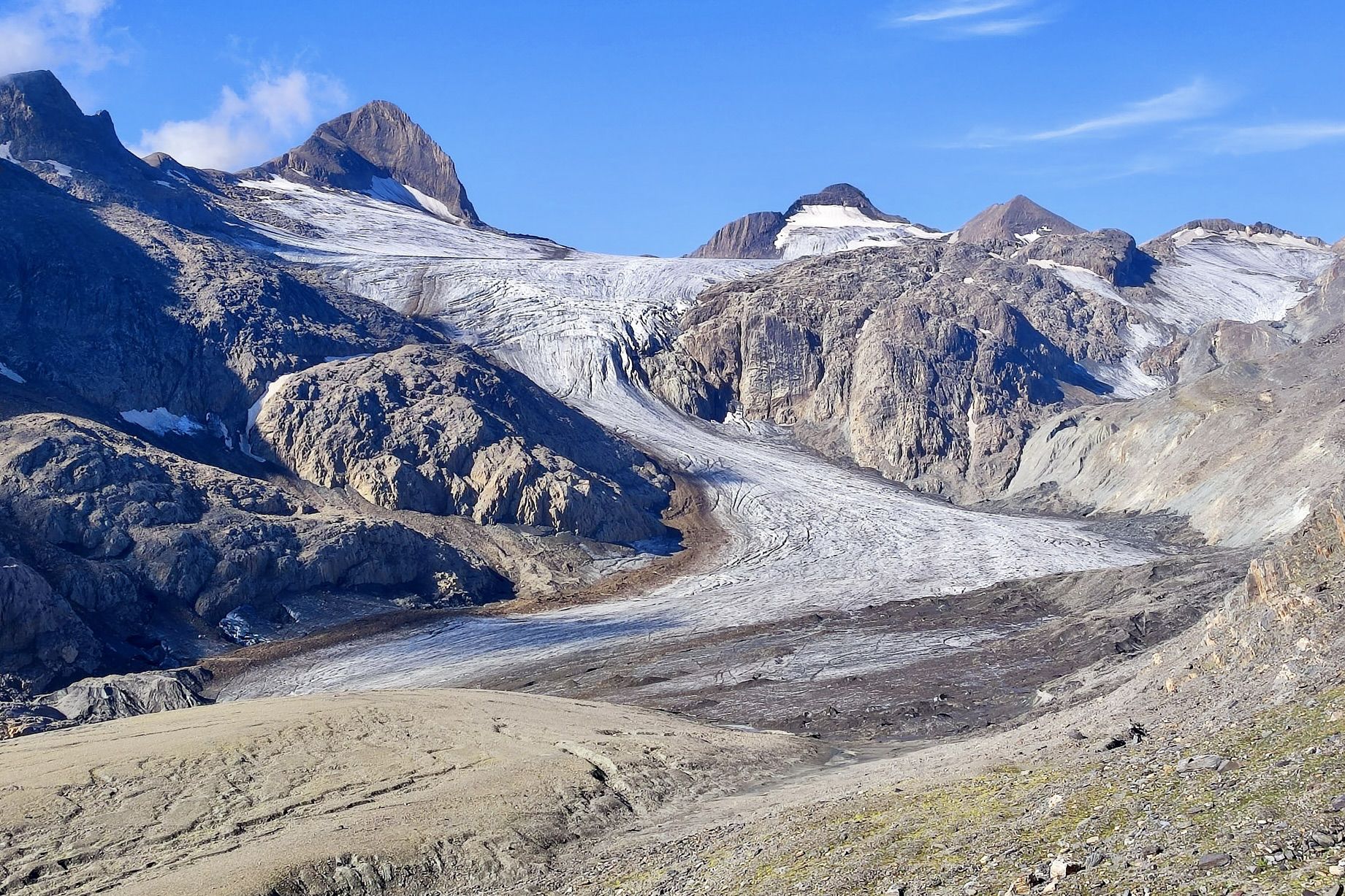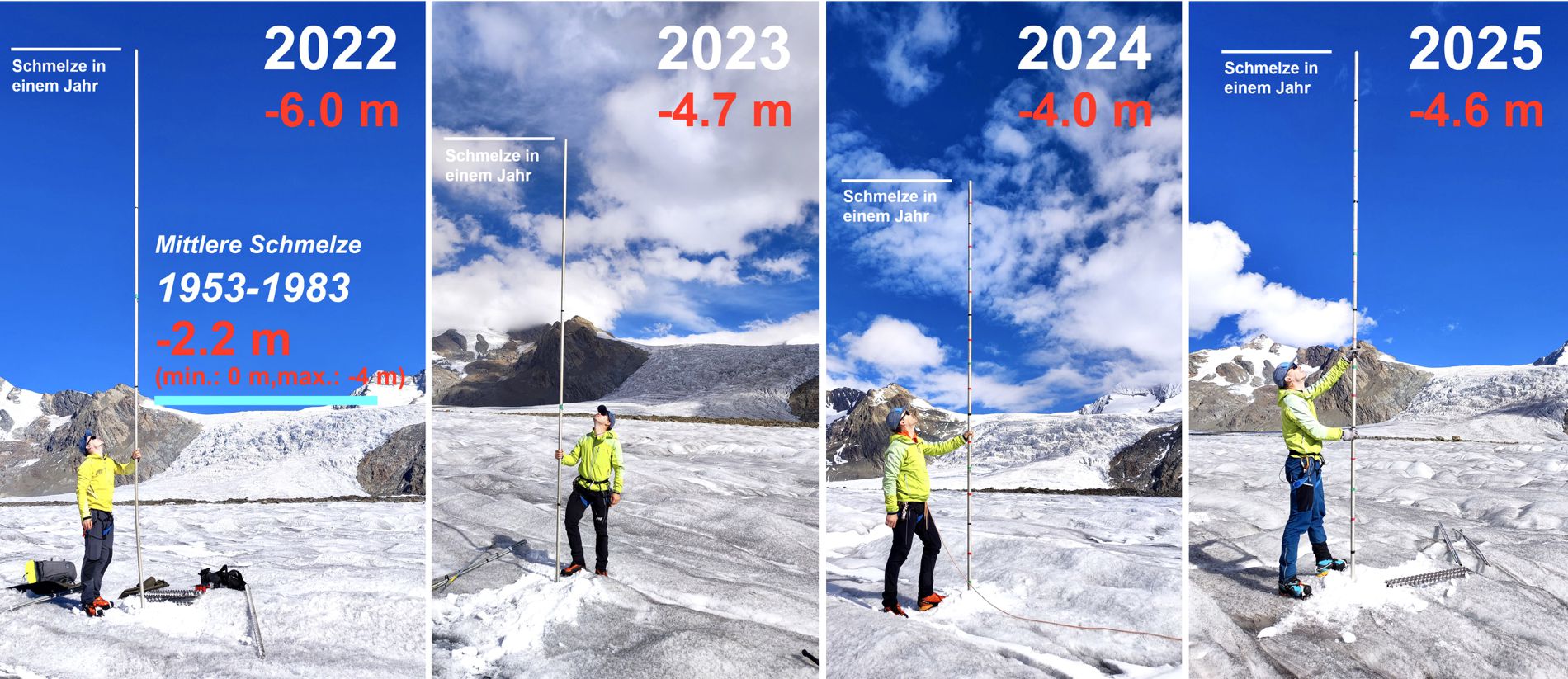And Swiss glaciers continue to melt
Glacial melting in Switzerland was once again enormous in 2025. A winter with low snow depth combined with heat waves in June and August led to a loss of three per cent of the glacier volume. This is the fourth largest level of shrinkage since measurements began. Consequently, the ice mass reduced by one quarter in the last ten years.

Even the United Nations International Year of Glaciers' Preservation has seen further massive melting of glaciers in Switzerland. A winter with little snow was followed by heat waves in June 2025 that saw glaciers nearing the record levels of losses of 2022. Snow reserves from the winter were already depleted in the first half of July, and the ice masses began to melt earlier than had rarely ever been recorded. The cool weather in July provided some relief and prevented an even worse outcome. Nevertheless, almost a further three per cent of the ice volume was lost across Switzerland this year, and this is the fourth greatest shrinkage after the years 2022, 2023 and 2003. 2025 therefore importantly contributed to the decade with the most rapid ice loss. Glaciers all over Switzerland have lost a quarter of their volume since 2015. Over 1,000 small glaciers have already disappeared.

Read the full press release
Swiss Commission for Cryosphere Observation of the Swiss Academy of Sciences, 01.10.2025
Title image: The Gries Glacier (VS) once again suffered greatly in 2025. The glacier tongue is collapsing in on itself. Image: M. Huss
In the Media
Gletscherjahr 2025: Wie die Eisriesen dahinschmelzen
SRF Tagesschau, 01.10.2025
Für die Schweizer Gletscher war 2025 das viertschlimmste Jahr seit Messbeginn
Tagesanzeiger, 01.10.2025
So früh setzte die Gletscherschmelze selten ein – das ist das Resultat
Watson, 01.10.2025
Schweizer Gletscher schmelzen in Rekordtempo
20 Minuten, 01.10.2025
Die Alpengletscher schmelzen auch an den höchsten Gipfeln
Swissinfo.ch, 01.10.2025
